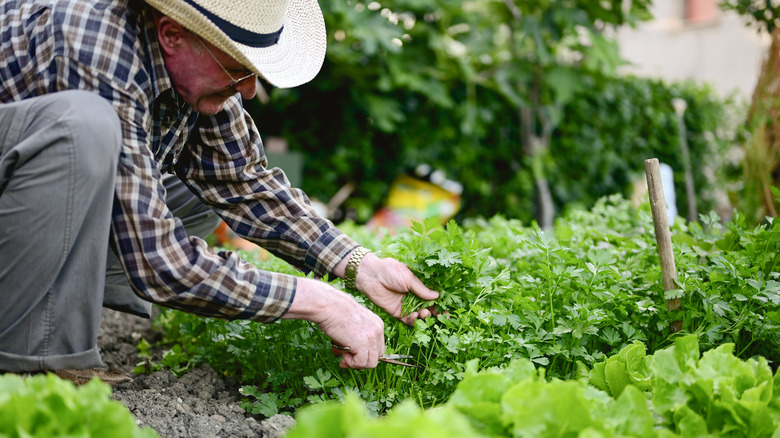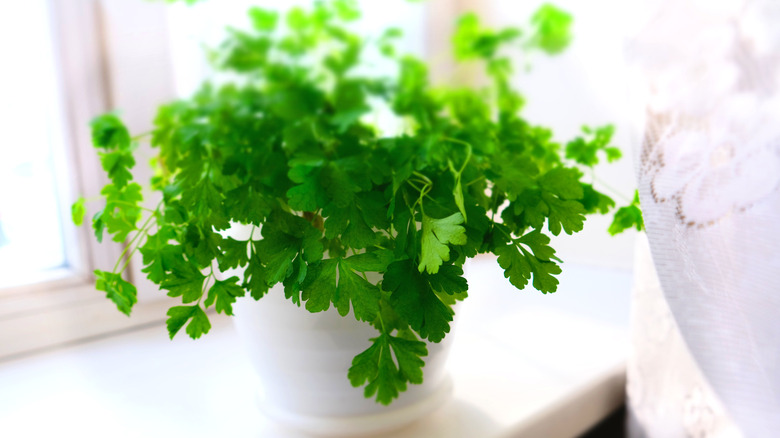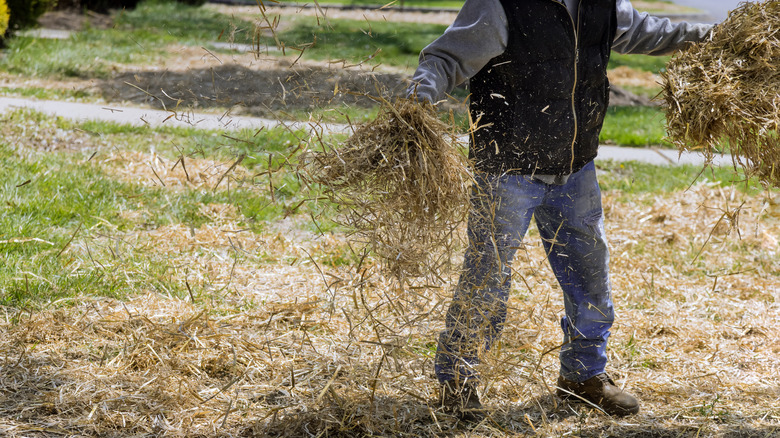Mistakes Everyone Makes When Trying To Grow Parsley In The Winter
Parsley is one of the most popular cooking herbs and a staple in just about every kitchen. It's no wonder then, that people like to add the plant to their vegetable garden to keep the leaves rolling in and as fresh as possible. Unfortunately, for those who are looking to grow parsley throughout the year and even past winter, you might run into a little snag. Gardeners often make a number of mistakes when trying to overwinter their parsley plants like failing to protect the roots or leaving them out in the cold.
Parsley grows best in the spring. Although it can keep producing new leaves in the winter, it doesn't always do as well in the cold, but this can be worked around. The problem is that many amateur gardeners don't know how to make sure that the plant thrives during cold winters and this ignorance usually brings forth bitter-tasting leaves. Parsley is a biennial plant which means its life cycle lasts two years. Technically, it will still be producing leaves past its one-year mark, but after this, the plant prepares to bolt and starts producing less tasty leaves.
Place the indoor parsley directly in the sunlight
Because the leaves become tough and bitter after their first year, it's normal for gardeners to grow and care for their parsley plant for just one season before planting and growing a new plant for the following spring. You can minimize this winter damage by introducing some alternative approaches like moving the parsley indoors during extreme weather conditions, adding extra layers of mulch to the topsoil, or covering the plants with a transparent glass or plastic dome (a cloche).
Moving the parsley plant indoors via transplantation is one of the best ways to keep it safe from freezing temperatures. This should be done at most eight weeks before the last spring frost date in your area. Parsley loves well-drained soil and full sunlight so transplanting it into a pot in your house would require you to meet these needs. Make sure to use rich soil as well as a pot with drainage holes at the bottom. Position the pot near a window or porch that receives enough sunlight every day.
Straw mulch or a cloche will keep the soil from frosting up
If you don't want to move the parsley indoors, you can keep it planted outside under gardening mulch. For your herbs, use layers of thick straw mulch to protect the plant from getting freeze damage. The harsh cold weather not only puts a stopper on the plant's enzymatic reactions but also causes the soil around the herb to become dry and unyielding. The weather may also come with periods of freezing and thawing out of the roots, which would lead to stress and death of the parsley plant.
Mulching the topsoil provides an extra layer of protection for the roots and keeps them from losing too much moisture. Alternatively, cloches work like mini-greenhouses when it comes to retaining warmth and they offer additional protection against the elements of winter like wind and frost. Keep in mind that parsley doesn't produce leaves as quickly in cold weather as it does during the warmer seasons, so once it's getting to the bolting stage, it's time to start on a new plant.


